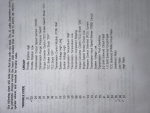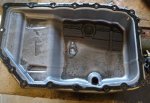taskunitbruiser
Active member
- 106
- 48
- 28
- Location
- Alabama
I just ran diagnostics on my 4L80E
Four codes: 22, 85, 86, and 87
22: Throttle Position Low
85: Undefined Ratio
86: Low Ratio
87: High Ratio
HMMWV will slip going up hills and occasionally go into limp mode (gears 1 & 2). ATF is red but was low when I bought it, so I added Dexron VI. Tested level, per dipstick, idling in park (which reads lower than when off). Restarting vehicle gets it out of limp. Engine RPMs seems higher than should be. It does idle about 800 rpm, but often shifts in and likes to run around 2500. I think it should be more around ~2000rpm to stay closer to peak torque, am I correct?
Any guidance on those codes? I am not a transmission mechanic at all.
Four codes: 22, 85, 86, and 87
22: Throttle Position Low
85: Undefined Ratio
86: Low Ratio
87: High Ratio
HMMWV will slip going up hills and occasionally go into limp mode (gears 1 & 2). ATF is red but was low when I bought it, so I added Dexron VI. Tested level, per dipstick, idling in park (which reads lower than when off). Restarting vehicle gets it out of limp. Engine RPMs seems higher than should be. It does idle about 800 rpm, but often shifts in and likes to run around 2500. I think it should be more around ~2000rpm to stay closer to peak torque, am I correct?
Any guidance on those codes? I am not a transmission mechanic at all.
Attachments
-
825 KB Views: 21





